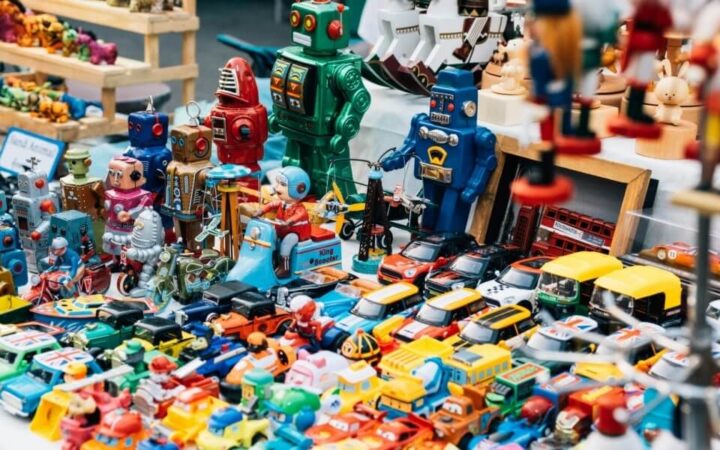Germans are gaming more than ever: Why gamification in e-commerce will transform marketing in 2025
Written by
Editorial TeamPublished on
With over 37 million gamers in Germany, gamification can become strategic advantage for German e-commerce. Discover how e-commerce brands turn play into profit and 2025 gamification trends in online retail.

Gamification is no longer just a marketing buzzword, it’s a proven strategy reshaping how businesses engage with customers. As digital commerce evolves, so too does the way brands interact with consumers. This article explores why the rise in gaming among Germans signals a powerful opportunity for German e-commerce, detailing what gamification is, the marketing benefits it brings, real-world examples of success, and the most relevant trends shaping 2025 and beyond.
Image Source: www.pixabay.com
Germany’s gaming community has reached unprecedented numbers, with around 37.5 million players engaging regularly, marking a 9% increase since 2020. About 59% of Germans between the ages of 6 and 69 now play games, showing a societal shift toward gaming as a mainstream activity. Surprisingly, the demographic growing fastest includes players aged over 60, rising from 6.4 to 7.7 million. The average age of German gamers has now exceeded 39.5 years, underlining gaming’s cross-generational appeal. Additionally, gaming in Germany maintains gender parity: 48% of players are women and 52% men.
These stats highlight a cultural evolution that marketers should not ignore: gaming is no longer niche. It’s an integral part of German life, opening enormous opportunities for brands to connect with audiences through gamification in e-commerce.
What is gamification?
Gamification is the application of game design elements in non-gaming contexts. In marketing, it involves integrating features like points, badges, leaderboards, progress bars, and challenges to motivate and increase user interaction. These elements appeal to psychological triggers such as competition, achievement, and instant gratification.
Why gamification in e-commerce matters more than ever in 2025
Gamification in e-commerce is becoming a cornerstone of experience-driven commerce. According to a 2024 report by Gartner, 80% of online shoppers now prioritize experiences over products when choosing where to shop. This shift elevates gamification from a nice-to-have feature to a must-have engagement strategy.
Benefits of gamification in marketing
Let’s explore how gamification in e-commerce boosts performance across key marketing metrics:
1. Enhanced customer engagement
Gamification turns mundane tasks—such as signing up for a newsletter or completing a user profile—into rewarding, fun experiences. According to Forrester, platforms using gamified elements experienced a 35% increase in engagement compared to non-gamified counterparts.
Nike Run Club, for example, uses social challenges and personal achievements to increase user stickiness. This creates an ecosystem where users return not just for products but for the experience.
2. Improved customer retention
Gamification significantly boosts retention by creating daily routines and reward loops. Duolingo keeps users returning through streaks and levels, and the same principle applies to e-commerce.
Users on gamified platforms often return for daily rewards, flash contests, and leaderboard placements, reinforcing long-term engagement.
3. Increased loyalty and conversions
Gamified loyalty programs build deeper emotional connections and transactional loyalty. According to Shopify’s 2024 research, gamified rewards can boost conversion rates by up to 25%.
Starbucks uses a point system where purchases earn “Stars” that can be redeemed for drinks or merchandise. This approach has grown its loyal customer base and increased purchase frequency.
Real-world examples: Gamification in e-commerce case studies
Some of the world’s most successful companies are using gamification to improve their e-commerce performance.
Shein: Fashion meets engagement
Shein rewards users for daily logins, product reviews, and outfit contest participation. These points can be redeemed for discounts, encouraging regular engagement and higher purchase frequency.
AliExpress: Games in the shopping journey
AliExpress uses casual mobile games like Lucky Forest and Coins Park to reward users with digital coins. These games make the shopping experience more enjoyable, increasing time spent in the app and likelihood of conversion.
Semrush: Content-driven gamification
Semrush’s #ShapeYourStory campaign used interactive quizzes and games to engage users, leading to over 2.6 million video views and a measurable increase in subscriptions.

Trends in gamification for 2025
As technology evolves, gamification in e-commerce is moving beyond simple point systems to include more immersive and intelligent experiences. These are the trends that are going to shape online retail in 2025 and forward:
AI-driven personalization
AI helps brands tailor gamified experiences based on user behavior. Real-time adjustments maintain the right level of challenge, enhancing retention. Gartner reports that AI-driven personalization lifted engagement metrics by 20% in 2024.
Augmented and virtual reality (AR/VR)
IKEA’s AR app is a great example of this trend—allowing users to visualize furniture in their homes. Such immersive tools are increasingly used to gamify shopping experiences.
Gamified influencer marketing
Brands now integrate challenges and games into influencer content. This leverages the influencer’s reach while creating interactive brand experiences.
User-generated content (UGC)
Incentivizing customers to create and share branded content through badges and rewards builds community and authenticity, expanding brand visibility.
Data-driven optimization
Gamification platforms generate real-time behavioral data, enabling A/B testing, audience segmentation, and trend prediction. This helps brands refine strategy and boost ROI.
Why Germany is a prime market for gamification in e-commerce
Germany offers unique advantages for implementing gamification strategies:
- A vast, experienced gaming population familiar with mechanics
- A broad age range of users, with the average gamer now over 39
- A digitally mature society with strong mobile and e-commerce adoption
These factors make Germany an ideal testing ground, and success story, for gamified marketing.
Conclusion
In a world where customer attention is the most valuable commodity, gamification in e-commerce transforms marketing from passive messaging into active experiences. As gaming culture becomes deeply embedded in German society, e-commerce brands have a golden opportunity to meet users where they are: in play.
By 2025, gamification in e-commerce won’t be a novelty—it will be the norm. Businesses that embrace this shift will not only drive engagement and sales but build lasting brand loyalty in an increasingly competitive market.
Other references
Forrester “The impact of gamification on user engagement”
Gartner “The future of customer engagement in e-commerce”
Shopify “Gamification trends in e-commerce”
***


